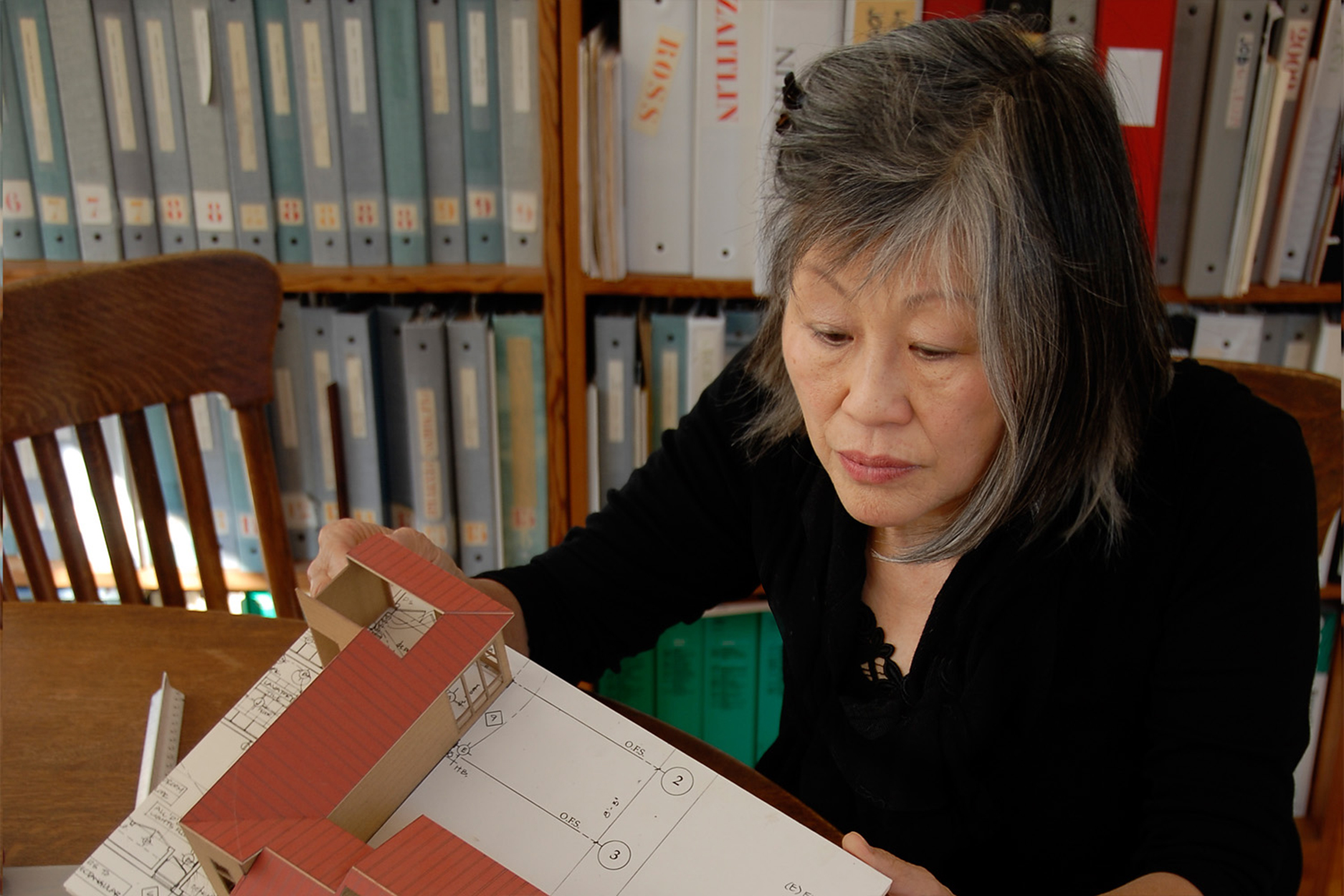
Ho reviewing an architectural model.
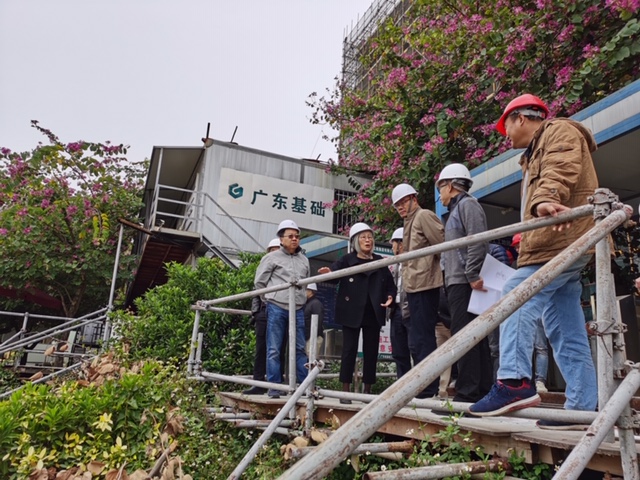
Mui Ho working on-site in December 2019.
Projects
Education: Peizing College Auditorium, Huadu, China (2010)
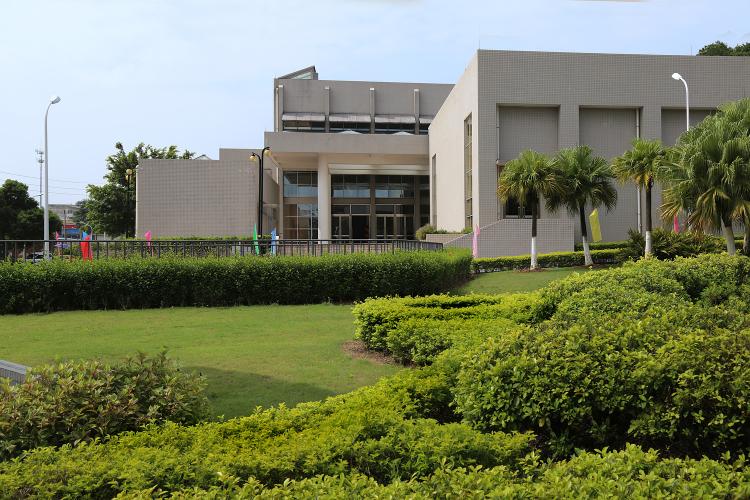
Entry.
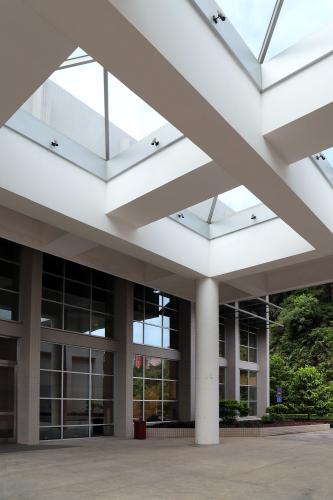
Entry forecourt.

Entry forecourt.
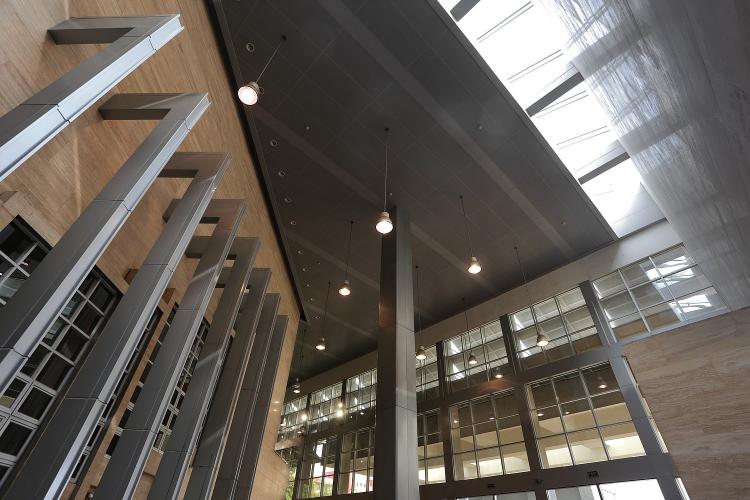
Lobby, interior. The auditorium became a hub on campus as a space frequently used for large lectures, performance arts, and formal school ceremonies.
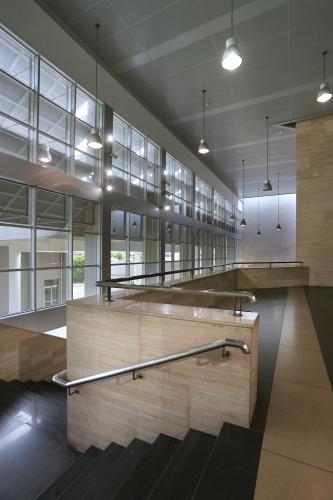
Lobby stairwell. Travertine limestone was used to create a feeling of warmth in the lobby.
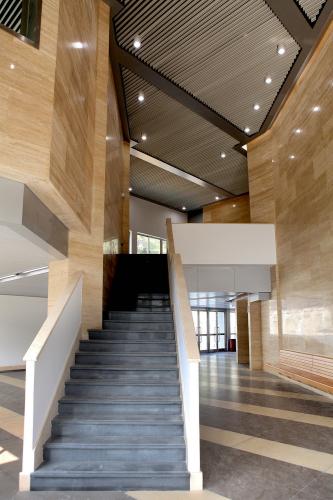
Lobby stairway.

Gallery.
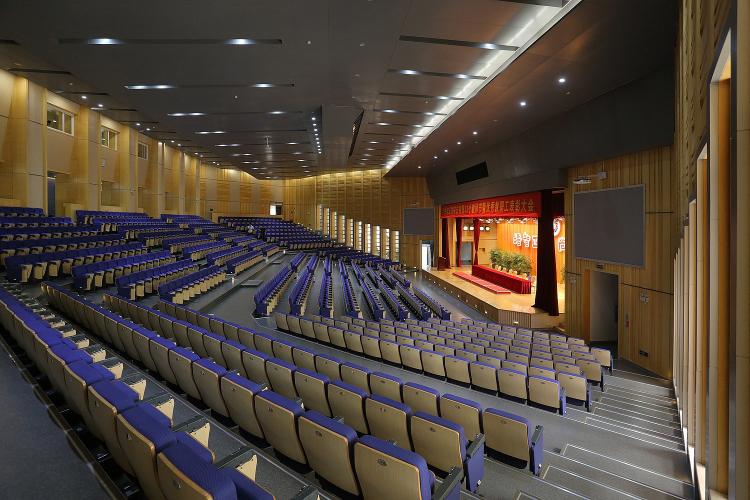
Central auditorium, designed to house large college-wide lectures and performances for the arts.
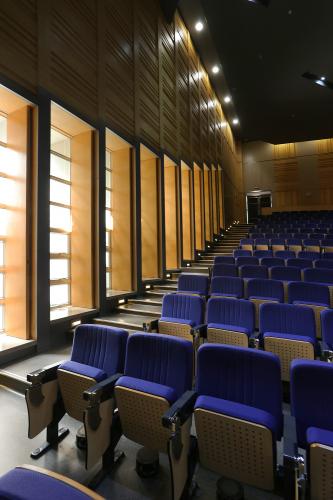
Central auditorium. Built-in air-conditioning and windows on both sides of the auditorium promote ventilation and airflow throughout the auditorium, while shades over the windows block out excessive direct sunlight.
Education: Peizing College Activity Building, Huadu, China (2006)
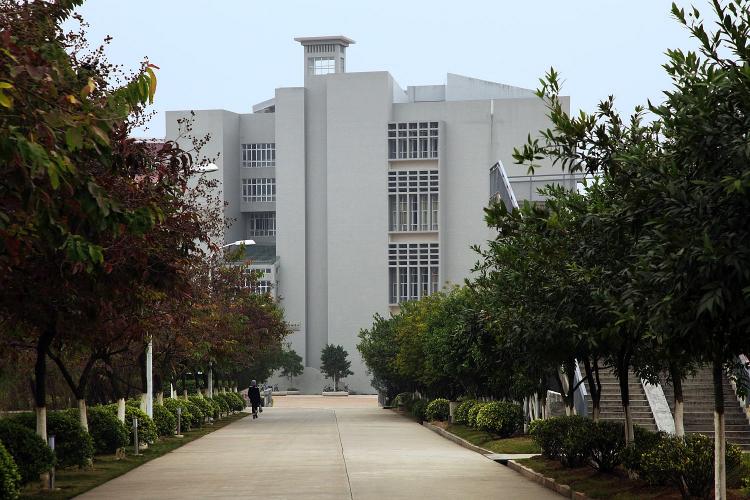
Exterior west. The building's design concept was organized along a covered street, enabling the students using the building to be aware of other activities.

Exterior west. The exterior is clad with locally made tiles to ease maintenance and prevent mold. Brise soileil shield windows on the south and west facades from direct sunlight.
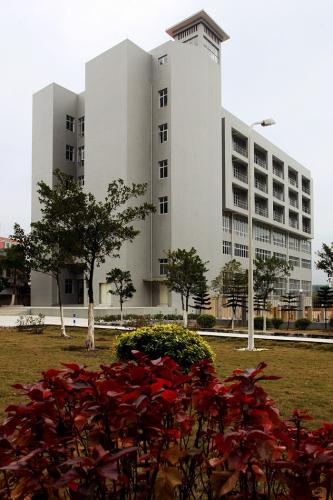
Exterior northeast. Two ventilation towers create a continuous airflow siphoning warm air at the top to bring cooler outdoor air in at the lower levels.
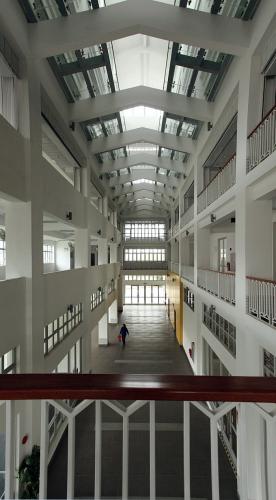
Central atrium, designed to visually link the activity spaces at the center of the building.
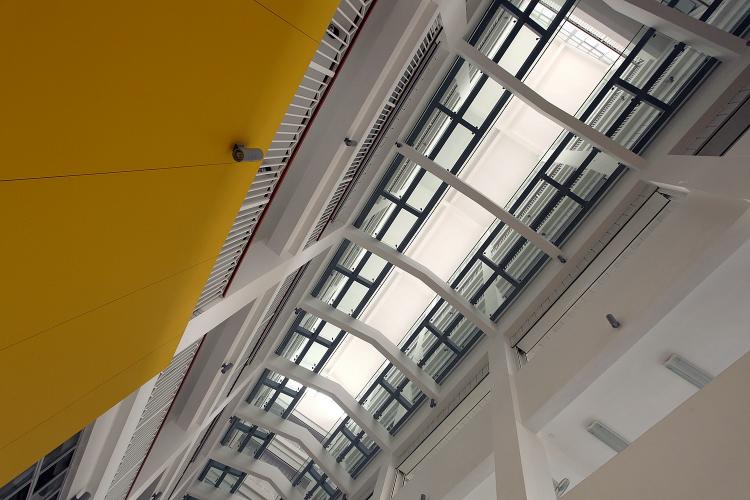
Central atrium, designed to provide natural ventilation throughout the building.
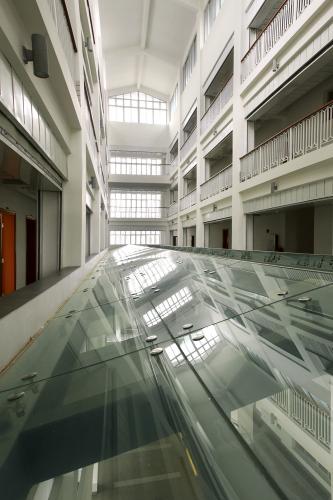
Central atrium. An intermediate glass ceiling at the third floor dampens sound at the upper floors and helps to make the height of the seven-floor atrium less imposing.

Ballet studio, interior view. Tall operable windows let in natural light and provide ventilation in all activity rooms especially the martial art and ballet studios.
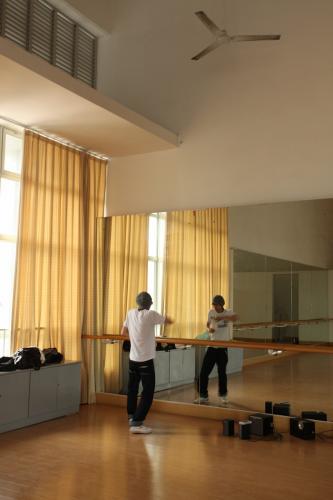
Ballet studio, interior view.

Ballet studio, windows. All rooms have operable windows for daylighting and natural ventilation.
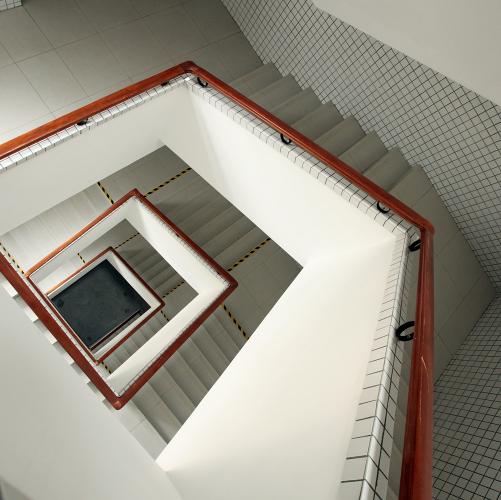
Stairway, interior.
Education: Peizing College Administration Building, Huadu, China (2003)
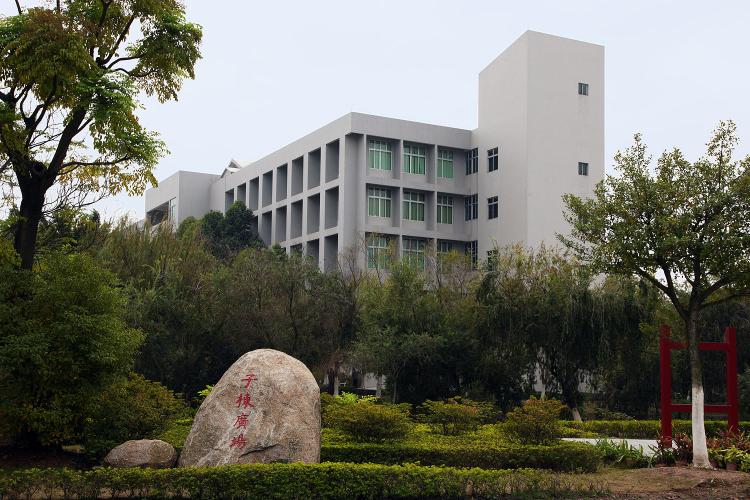
Exterior east. This four-story administration building was designed to house the large administrative staff, as well as offices for professors.
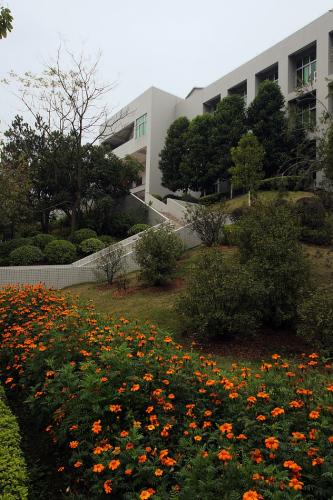
South entry. The Administration Building sits prominently on top of a hill, making it visible from afar.

Central corridor. Clerestory windows allow natural light to evenly light the long central corridor.

Stairway, lit by clerestory windows.
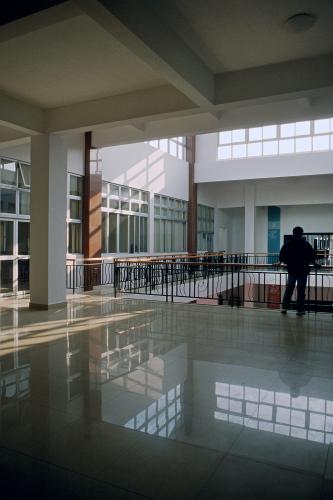
Entry atrium. The walls between offices and corridor were glass windows to allow natural lighting to spill into offices.

Conference room, interior.
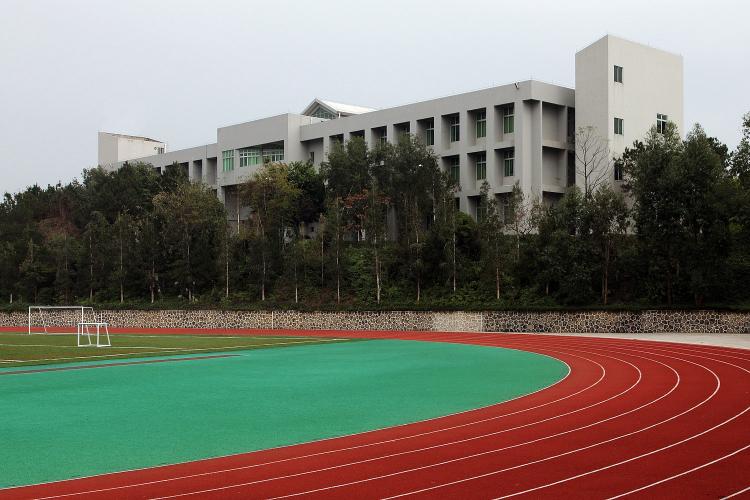
Exterior north and track field.
Housing: Hongnam Village, Huadu, China (1998-2003)
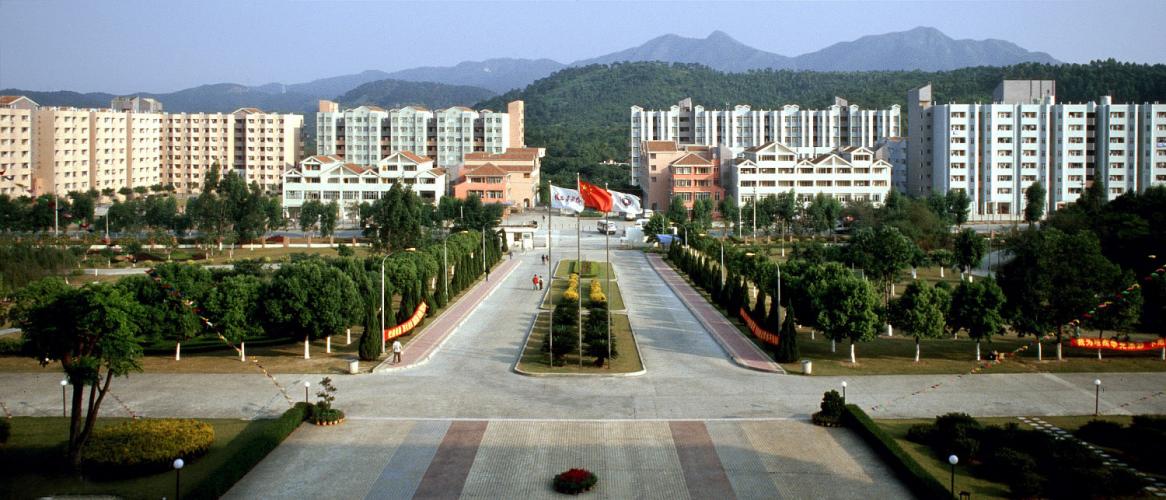
Located 20 miles from the nearest town, Peizheng College acquired the piece of land across from campus to create a college town and house more students and staff.

Hongnam Village is a mixed-use community, with both residential and commercial spaces.
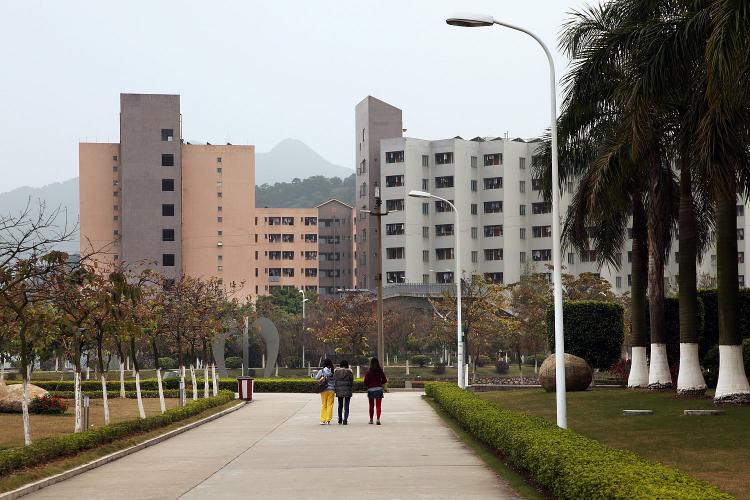
Students reside in either the eight-story dormitory or in apartment buildings.

Prior to this construction, no university in China offered student apartments. Mui Ho advocated for the apartments as an opportunity for students to learn to live independently.
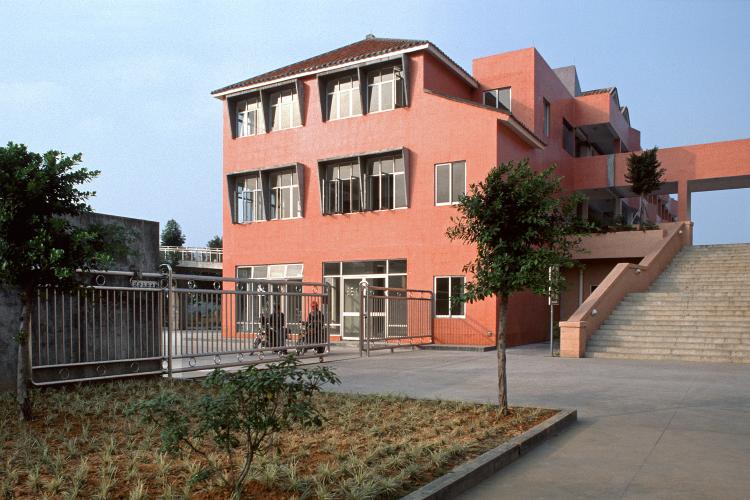
At the heart of the project are six buildings and parking structures of the town center, with larger apartments and commercial space.

The village's commercial spaces created new economic opportunities for local farmers and merchants to open small kiosks, improving community relations with the college.

The shops are located under the covered arcade, typical of cities in Southern China, to create shade for pedestrians and keep products out of the sun.
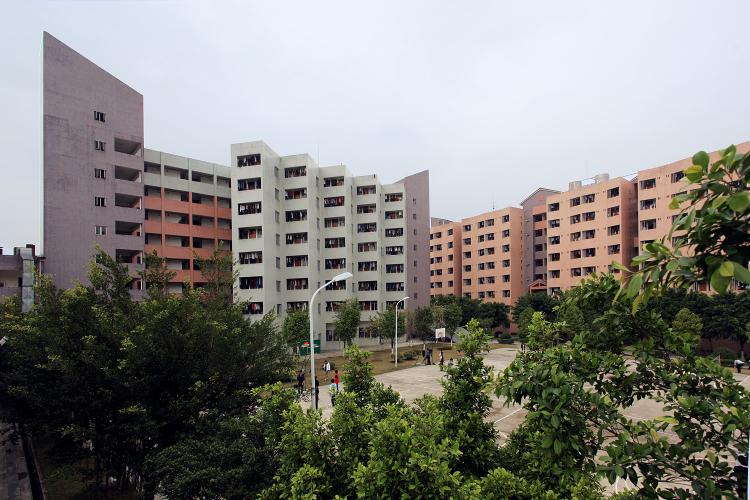
The Hongnam Student Housing complex comprises 13 buildings, some devoted strictly to dormitories and others to small apartments, arranged to form one large and one smaller courtyard.
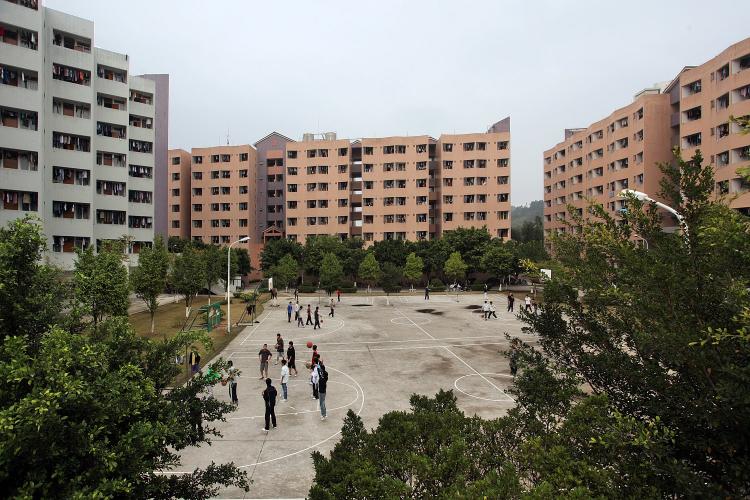
Basketball and tennis courts in east dorm courtyards.

East dorm entry.
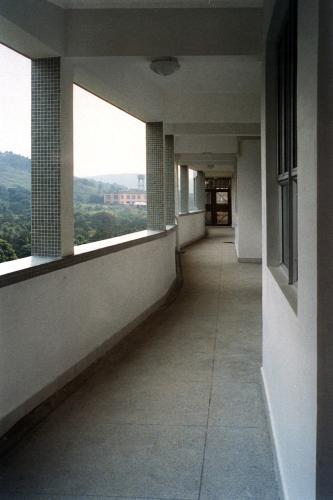
The dormitory design included open air stairways and corridors to account for the hot and humid climate.
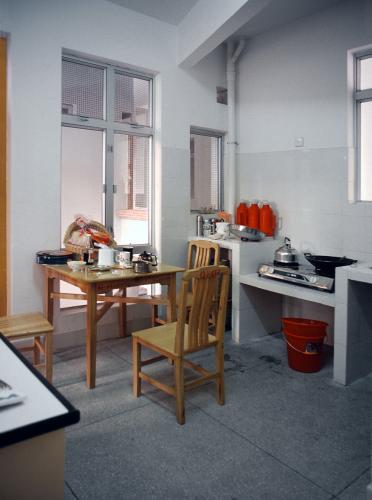
Dormitory room: The dormitories that were built reduced the number of students living in each room, which had its own bathroom and a balcony for hang-drying laundry. All dorm rooms were designed to have windows on both ends to allow for increased ventilation.
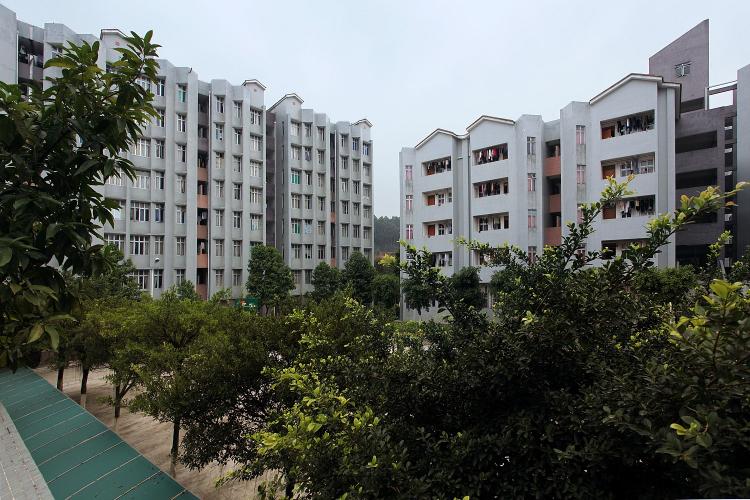
West dorm courtyard, the smaller courtyard, as viewed from its parking structure deck.
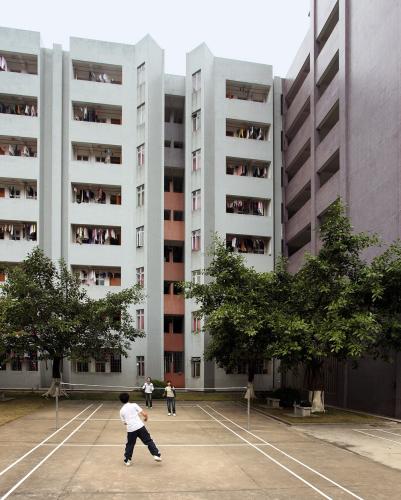
Tennis court in west dorm courtyard.

West dorm entry. The sculptural facade of the dormitories was created by adding undulating balconies, a minimal addition to costs in concrete construction. The deep-set balcony shields the glass window from direct westward sunlight.

Entrance to the parking structure.

Project presentation board for the OWA Reception at the 2009 AIA Conference in San Francisco.
Housing: Sparks Way Commons, Hayward, California (1984)
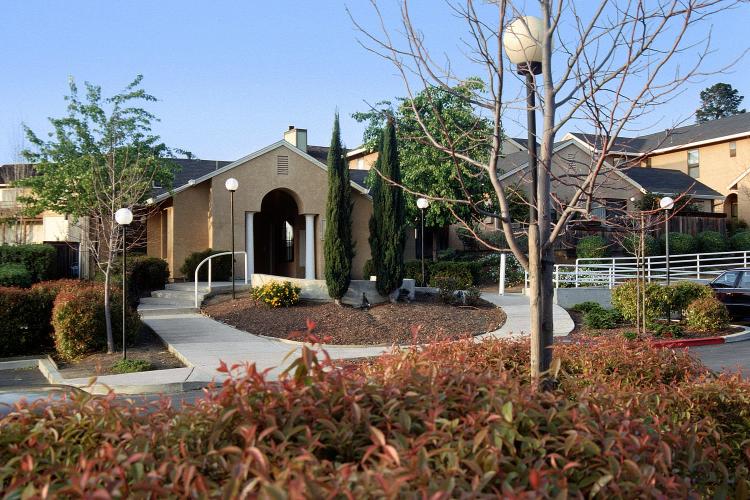
Community center. The primary concept of the design was to create a "home within a community" for a total of 45 units.
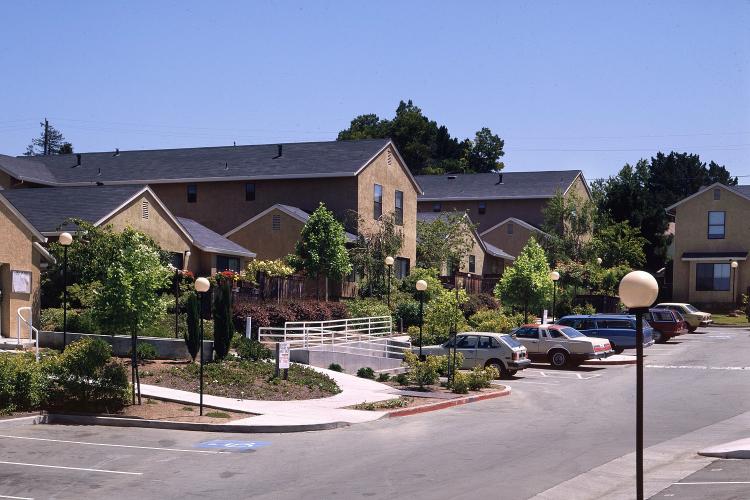
Central parking.
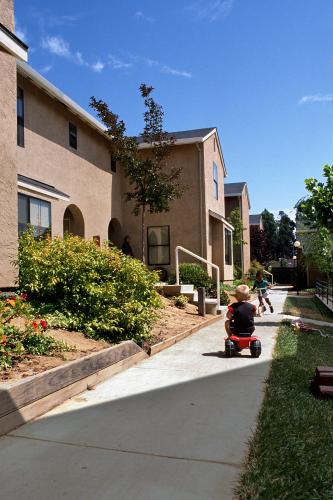
Units facing parking.

Duplex unit. Single parents expressed in interviews and community meetings a preference for their homes to be non-apartment-like in nature.
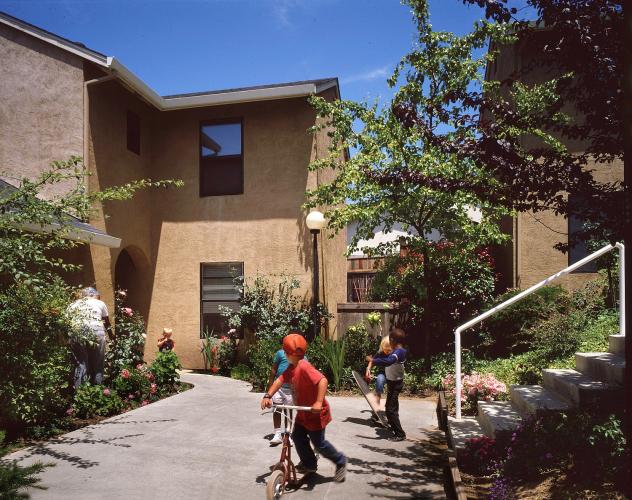
Entry courtyard. The court is designed to be used for play by small children who can be visually supervised by their parents from the house.
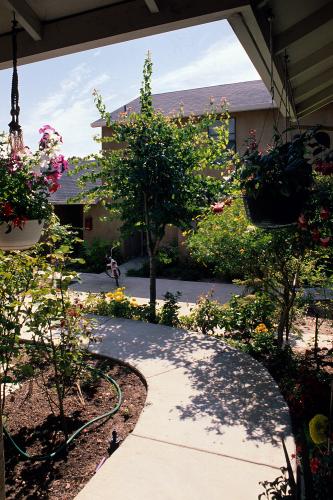
Entry courtyard. Small groups of five units are arranged around a pedestrian court, creating a sense of neighborhood and security.

Entry courtyard.
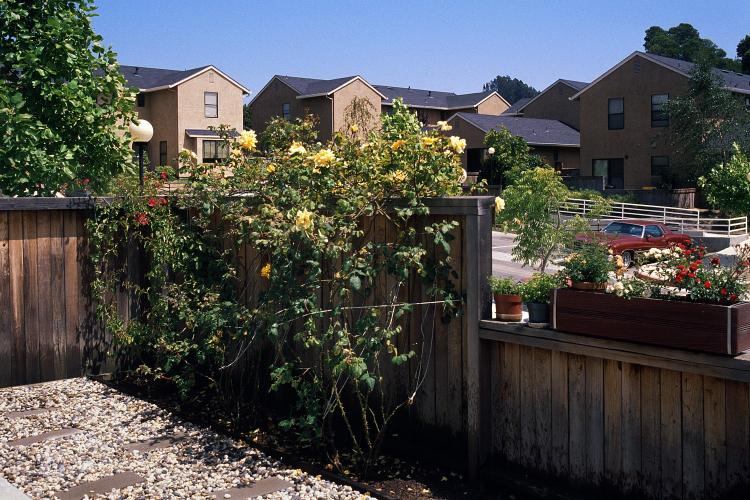
Private yard. Each unit has its own small garden which allows a space for outdoor family activities. To further enhance privacy, all the outdoor spaces are enclosed with a low wood fence.
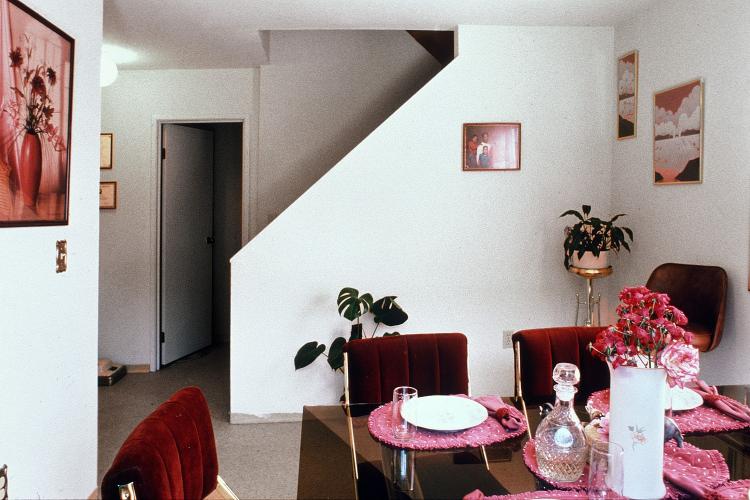
Unit interior. Community members expressed a preference for their homes to include the amenities of single-family homes.

Partial site plan. All 45 houses sit on the sloping portion of the site to leave a large flat area for recreation, such as a softball diamond and play structures.
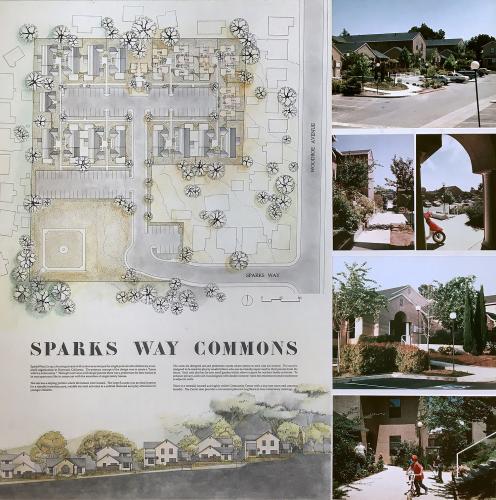
Presentation board. Sparks Way Commons, designed in association with HGT architects, was the first affordable housing project in the U.S. to be developed specifically for single parents with children.
Housing: Henry Street Condominiums, Berkeley, California (1985)

Driveway.

Courtyard link. To achieve privacy and security, entry to each house is located through two courtyards.

View of houses from street. The use of stucco and pitched roof exterior is to blend with the existing neighborhood in scale and in form.
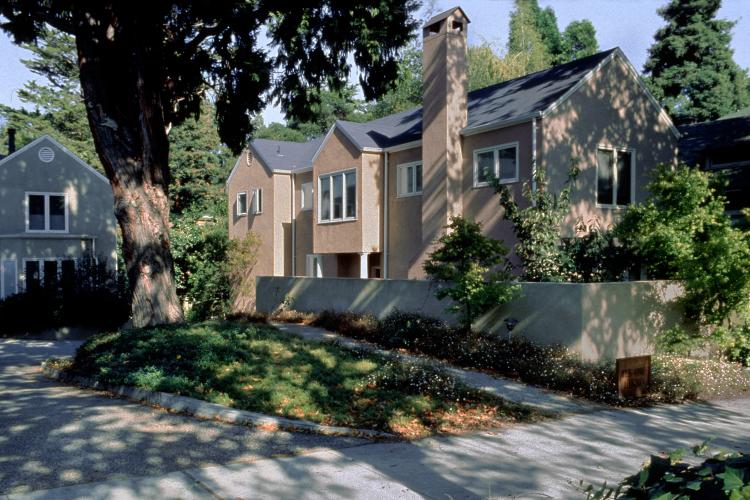
Entry to courtyard.

Courtyard link.
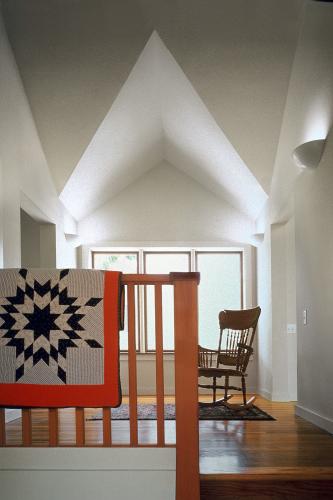
Upper floor landing. The spaces are designed to be fluid, open, and full of light, while partitions provide visual privacy.
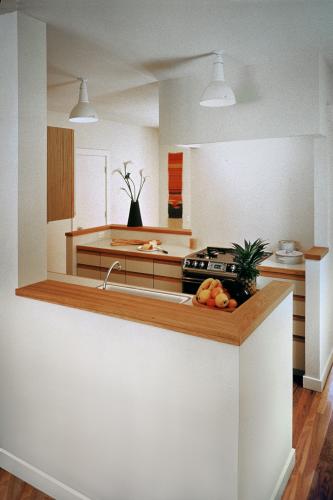
Kitchen. The spatial quality and ambience of these houses are modern, achieved through the modulation of unusual ceiling heights and interlocking spaces.

Living room staircase. These houses might appear "traditional" in an urban sense yet elicit an element of surprise not perceived from the outside.

Site plan.
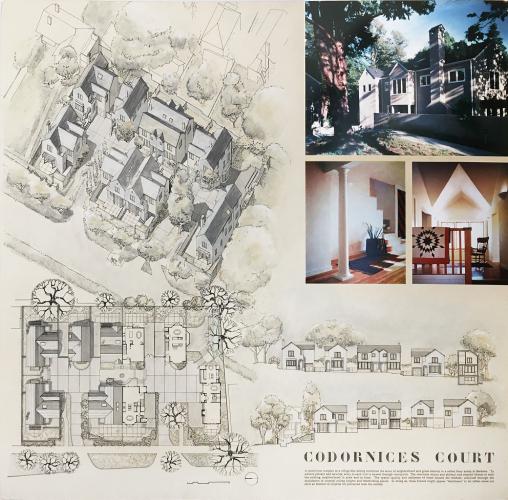
Presentation board. This project is a nine-house complex in a village-like setting that reinforces the sense of neighborhood and gives identity to a rather busy artery in Berkeley.
Community: Tassajara Bath House, Tassajara, California (1983)
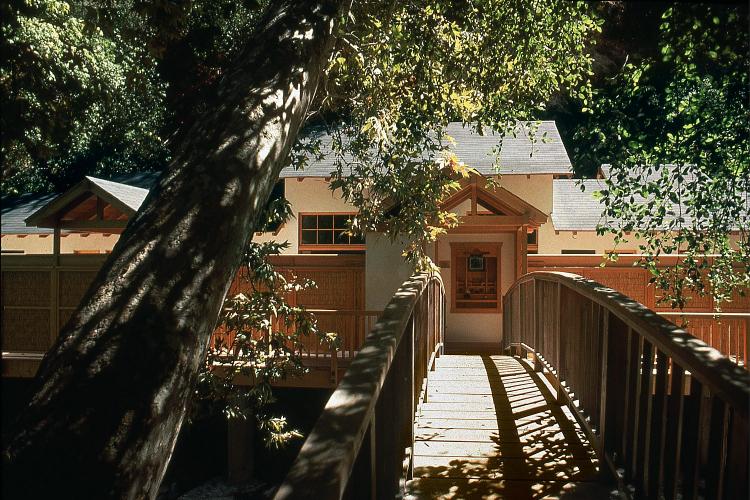
Entry. The design of the Tassajara Bath House constitutes a series of baths and bathing areas, both communal and private for the Zen community.
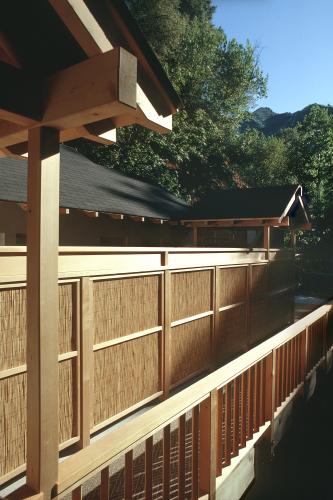
Entry walkway. Similar to other Eastern religious centers, a long passage precedes the entry to the bath.

Tub room. Materials were used in such a way to be tactile and sensuous. The hand-planed Alaskan cedar beams, railings, and benches are pleasing to the touch and give the architecture a Japanese craftsman building quality.

Pool room. Similar in effect to the aggregate of small buildings in Japanese architecture, the staggering roofs let in animated sunlight from the east and west through clerestory windows.

Shrine. The building is designed to capture the spirit of practice, tradition and philosophy of Japanese Zen Buddhism.
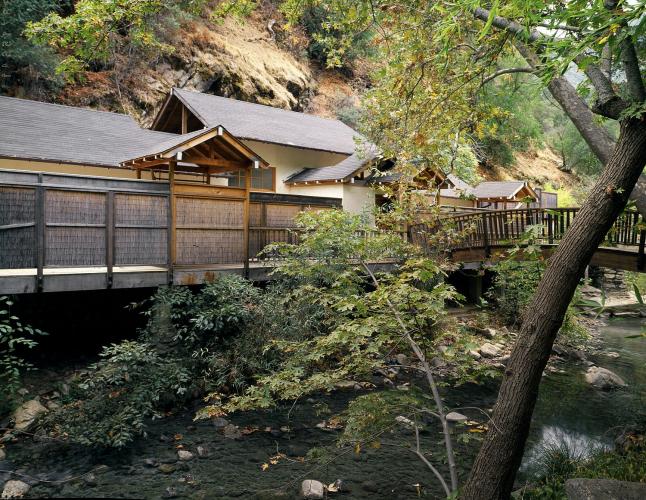
Exterior from creek. Situated at the bottom of the valley, this long narrow building is partly nestled into the hillside and partly extends over a stream.
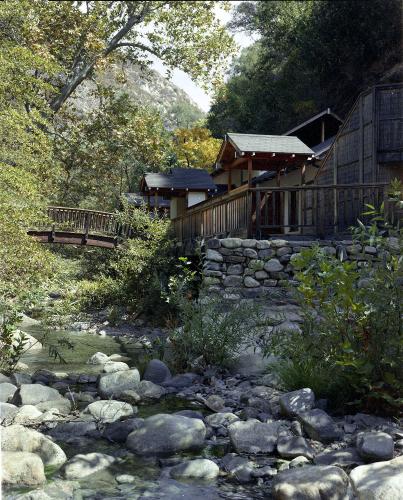
View from the creek. The building form reflects the attitude of Zen practice and is stylistically integrated with its rustic environment.
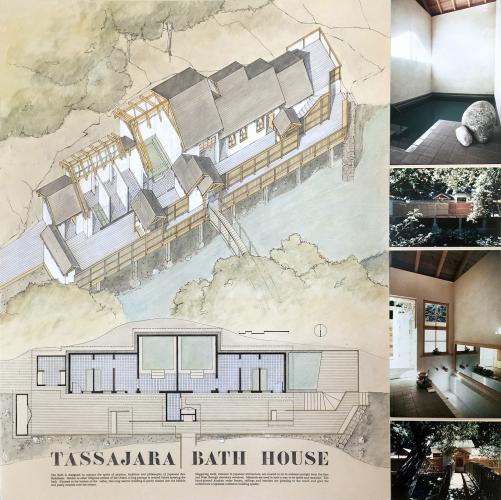
Presentation board.
Community: True Sunshine Church, San Francisco, California (1992)

Exterior west. Design of a new sanctuary for the Episcopalian Church in Chinatown.
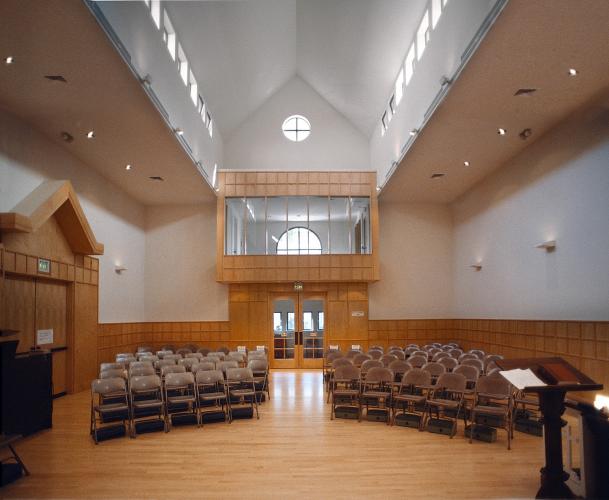
Chapel. The new sanctuary will replace the existing multipurpose room as a place of worship
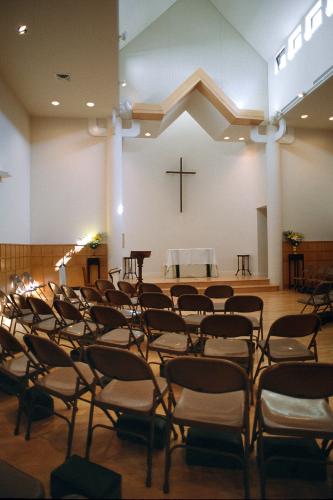
Chapel interior.

View of chapel from loft. The new church will embody both Chinese and Christian cultures.
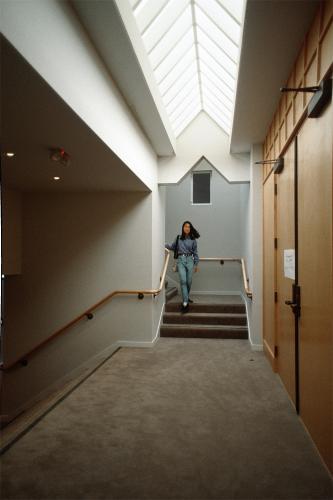
Vestibule.

Section plan. The existing building is renovated to meet the church's needs for a community gathering space, classrooms, daycare, and administration.
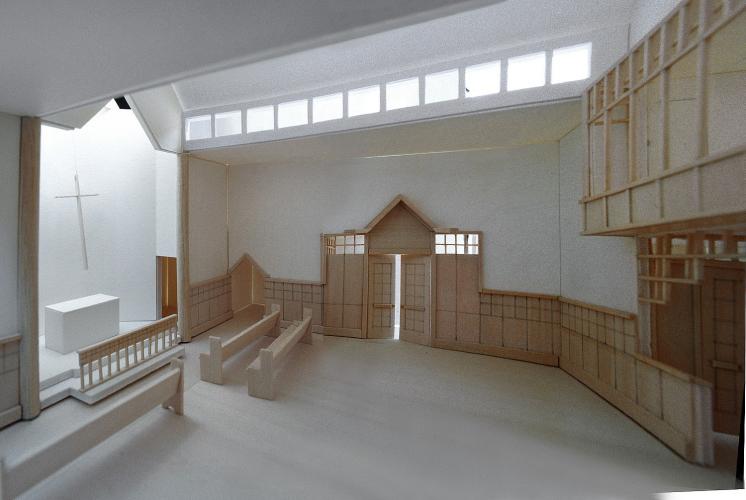
Chapel model of a new sanctuary for the Episcopalian Church in Chinatown.
Community: Bonita House, Berkeley, California (1982)
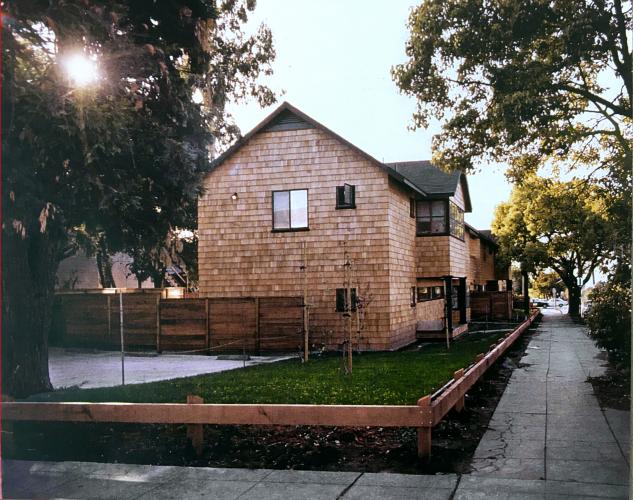
Exterior viewed from street. Bonita House, designed in association with HGT Architects, was a demonstration turn-key project, funded by HUD to accommodate former mental health patients for up to one year after their release from mental institutions.

Front facade viewed from street. The concept of small houses, instead of one large one, was designed primarily to keep the new structure in scale with the immediate neighborhood and the community-at-large. These two houses, similar in size and material to other houses in the neighborhood, minimize the connotations of a halfway house and furthermore, do not draw attention to themselves.

Rear deck and stairs. There is a private patio on the garden level and private deck on the second level for the residents’ use. A long narrow fenced garden with fruit trees was also incorporated into the design for the residents to stroll in privacy.

Upper deck.
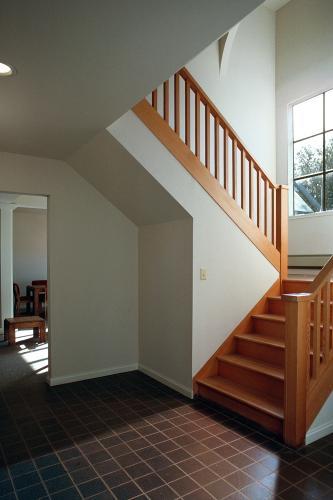
Entry stair.

Entry stair.
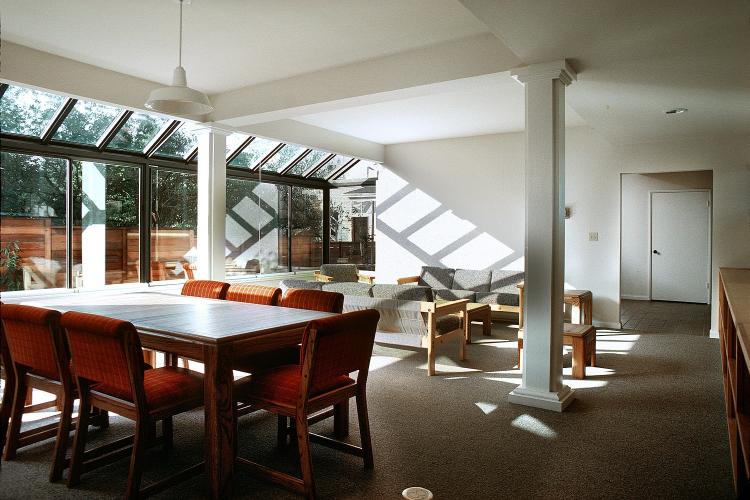
Living room.

Kitchen.
Homes: SoHo House, La Jolla, California (1994)

Entry. SoHo House is a large private residence for a designed around a central courtyard for a Chinese-American couple and their extended family.

Courtyard. The design of the home recalls both the courtyard houses of China and of Spanish Colonial times.

Courtyard. The building material is stucco and Spanish tile, compatible with houses in La Jolla.

Courtyard pond.

Entry hall. An open covered walkway provides a view of the central courtyard and links the house's three wings. Designers used unglazed Spanish tile for the walkway.
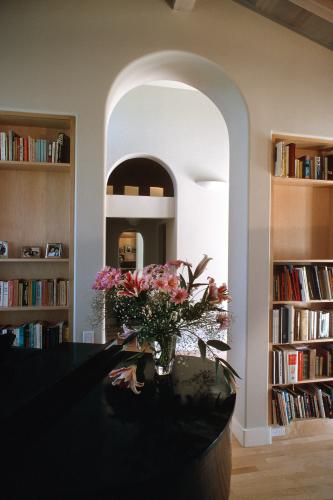
Library.

Breakfast area.
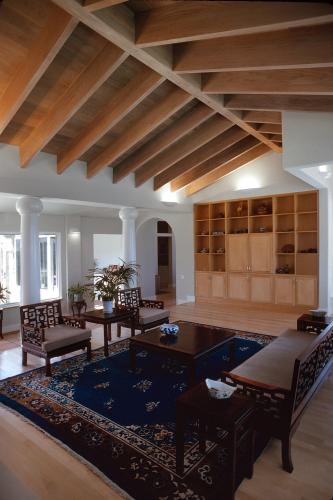
Living room. Designers used wood for the living area floor to give the space a simple and calm aesthetic.
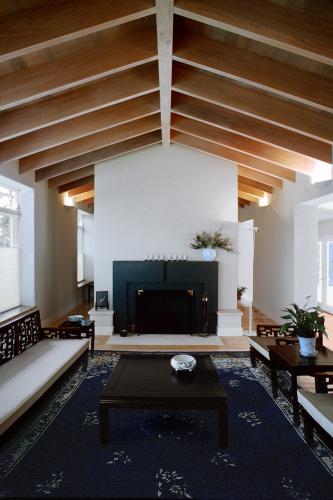
Living room.

Dining room.
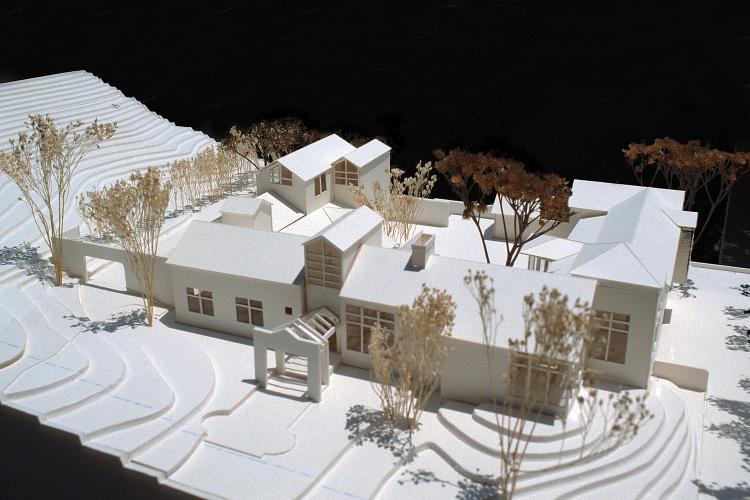
Model.
Homes: Twin Brook Farm House, Napa, California (1995)
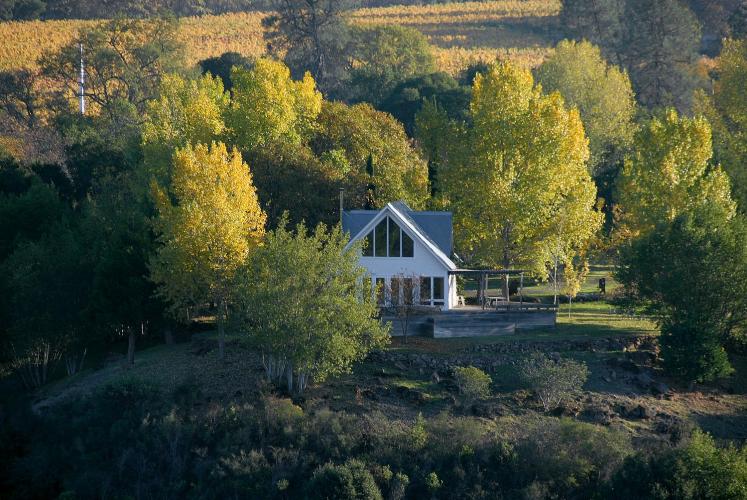
View of site from north. This small house sits on a remote property in the hills east of Napa.
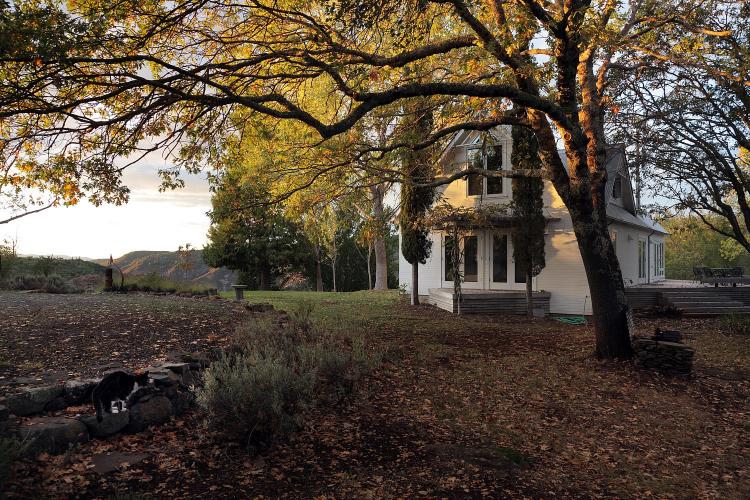
Exterior south.

Exterior northeast. The structure uses the vernacular of a traditional rural farmhouse with some modern accommodations.
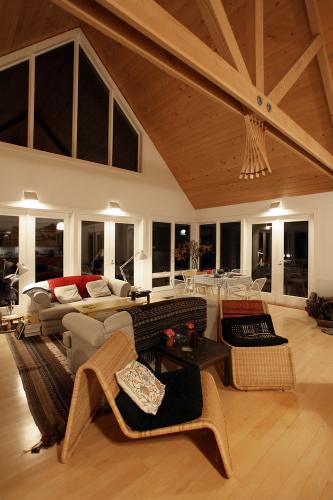
Living room.
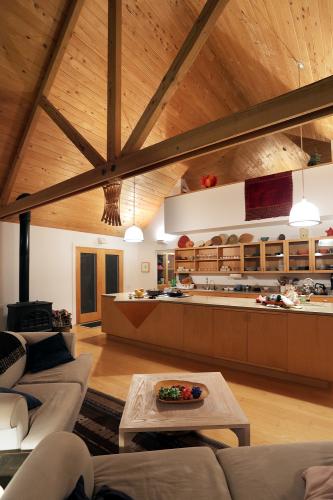
Kitchen.
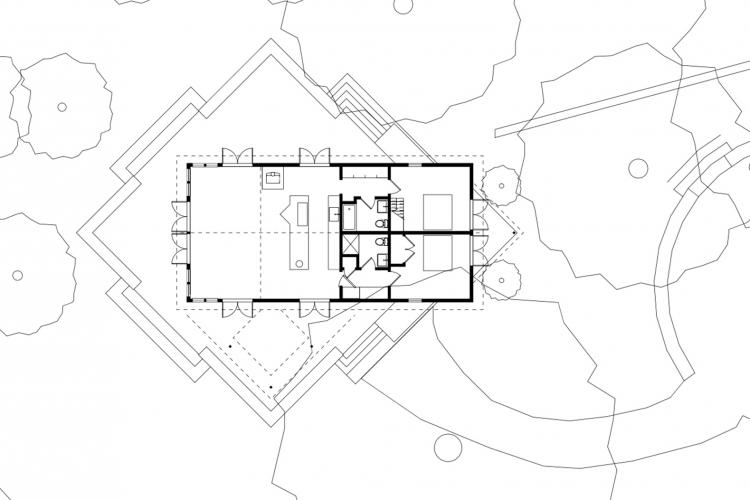
Plan.
Homes: Sutch Home Studio, Berkeley, California (1992)
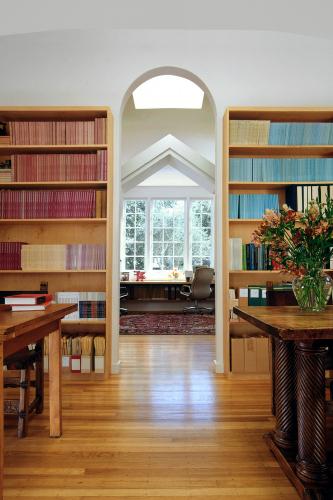
Library. The Sutch house is a remodel of an existing 1920s single-story bungalow, originally an auxiliary house, to be used as a study for an economics professor in Berkeley, California.
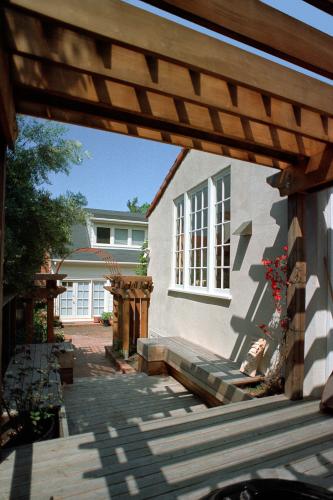
View from the deck. Wooden trellis arches function as gateways between the study and the house.
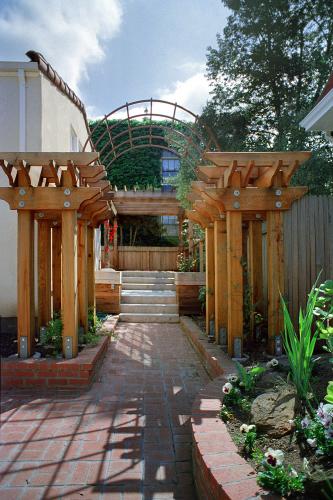
Deck. Wooden trellis arches function as gateways between the study and the house.
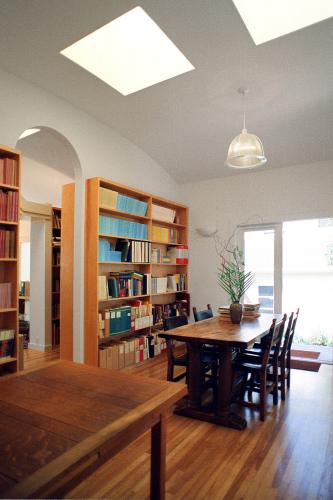
Library. The layers of spaces are connected axially with a tall archway and then a pediment, which represent a tie to classical learning.

Library. The design separates the work area and the conference area with a library alcove. This sequence of spaces subtly divides the various functions of the study, creating a sense of layering and making a very small building feel more generous.
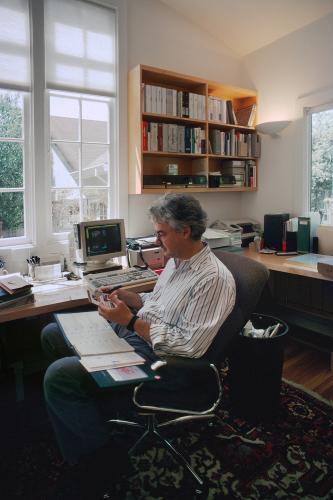
Office. The objective was to create an office/study that could accommodate technology for work but still maintain the old-fashioned feeling of a scholar's study.
Homes: Joseph Shop House, Pondicherry, India (2009)

Street outside the shophouse. The owner/director Linda Joseph hired Mui Ho to work on the shophouse project in Pondicherry, a historic town in India.
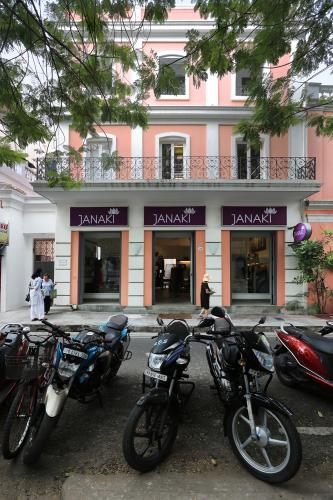
Street facade. Pondicherry has been designated an UNESCO town, and therefore, all the buildings had to comply to the historic standards. To maintain cohesiveness among the historic buildings, the town required buildings to be painted one of three designated colors — pink, yellow, and gray.
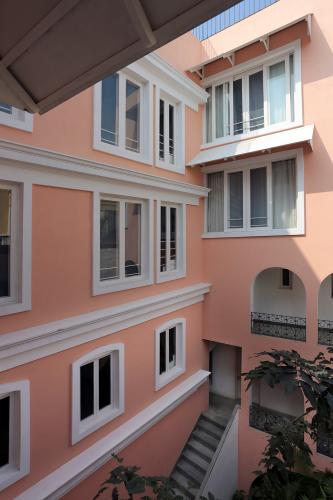
View from the courtyard. Mui Ho found it a challenge and an opportunity to learn about the building practice in the area as well as the vocabulary of the 19th century French colonial style in which the buildings were designed.
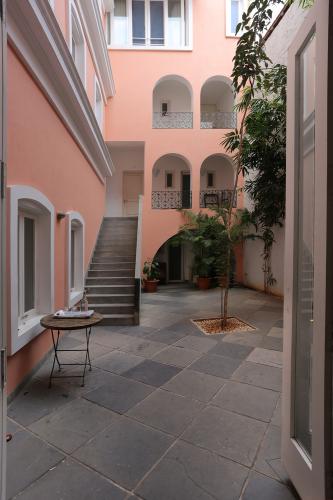
A primary concern was to make the interior of these long, narrow buildings bright with natural light. Three courtyards provided light and cross-ventilation.

Shop floor.
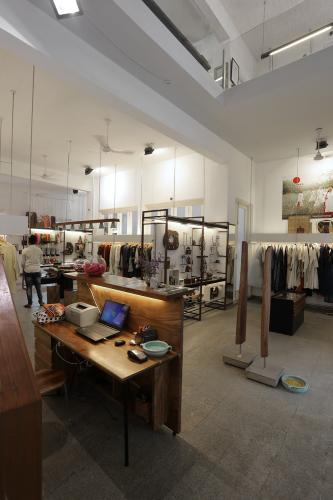
Shop floor.

Mezzanine.
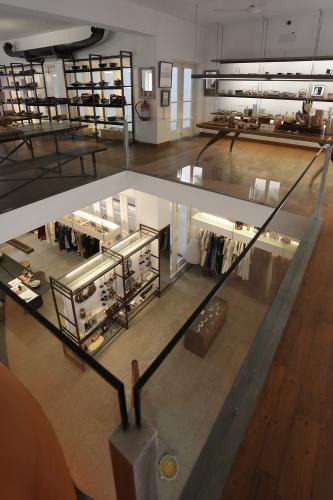
Mezzanine balcony.

Interior of one of the upper floor apartments that occupied the top two floors of the shophouse.
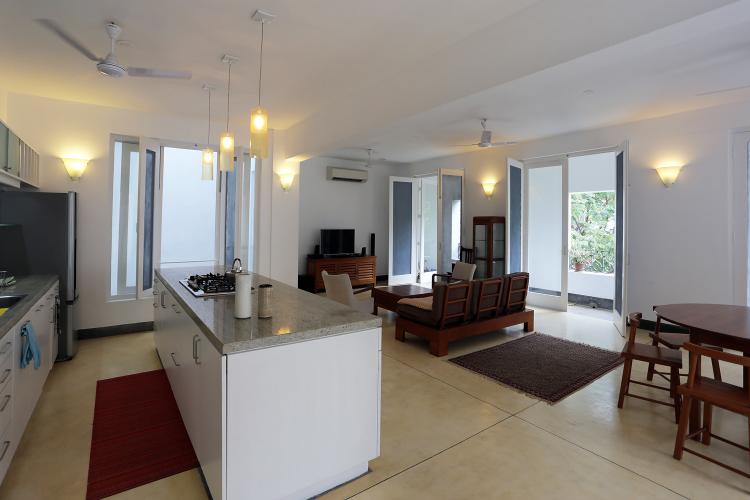
Upper floor apartment. A private entrance to the housing on the upper floors separated residences from shops below.
Research: Hakka House, Fujian, China
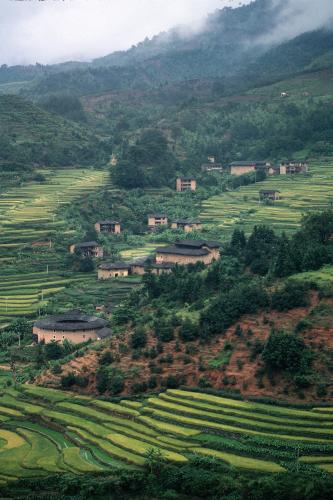
Fujian landscape. The Hakka people migrated from the Henan area more than 300 years ago to settle in the southern Fujian and northern Guangdong province.

Hakka round and square clan house. Known also as the Kejia people, the Hakka built fortress-like apartment buildings, generally on hilly higher ground to leave flatter areas for agriculture. They lived in large groupings originally for protection from bandits.
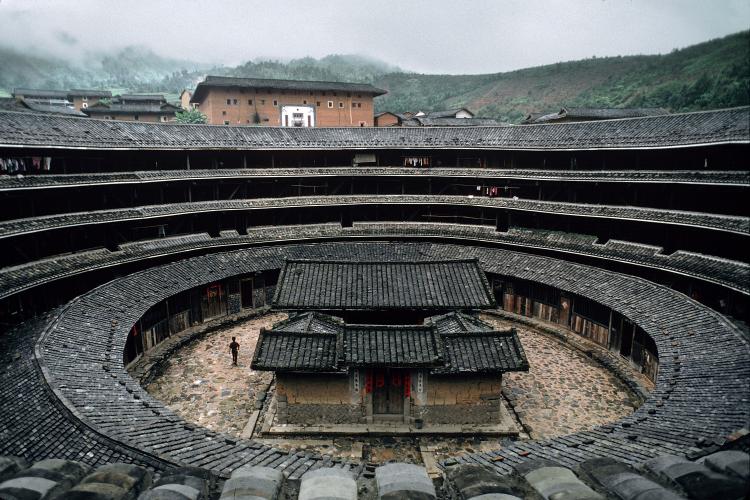
Hakka round clan house and clan shrine. Made of rammed earth, these clan houses could be circular, square, or sometimes shaped to fit the site.
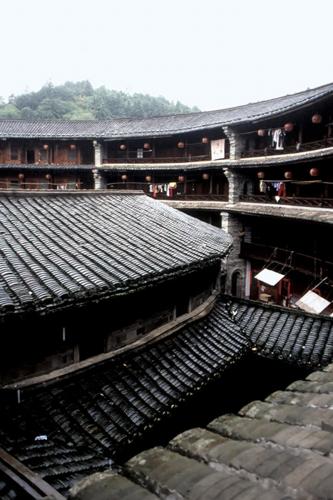
Hakka round clan house. The diameter of the house ranged from 50 meters to 250 meters, each capable of being self-sufficient for extended periods under siege.
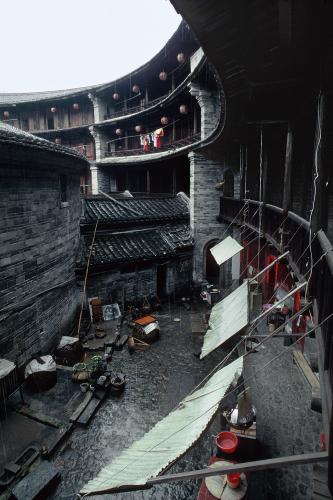
View of kitchens in clan house courtyard.

Round clan house. The clan houses were usually four stories with one main entry and two side doors. Stairs to the upper levels were built at the four corners.

Each clan house contained two or three wells.
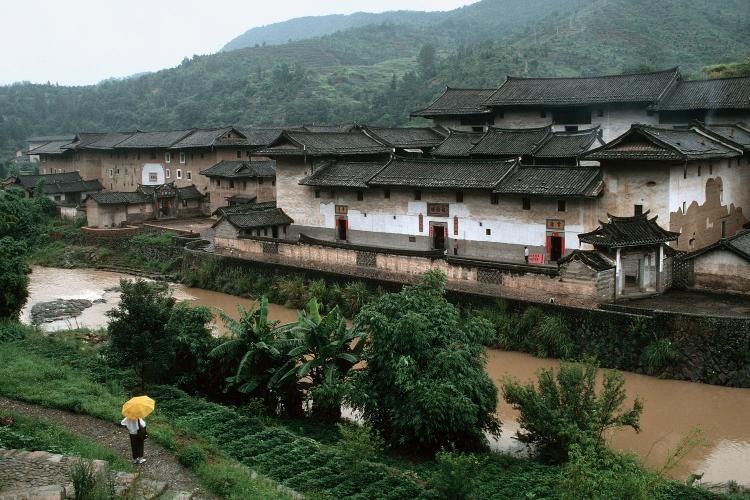
Hakka square clan house.

Square clan house courtyard.
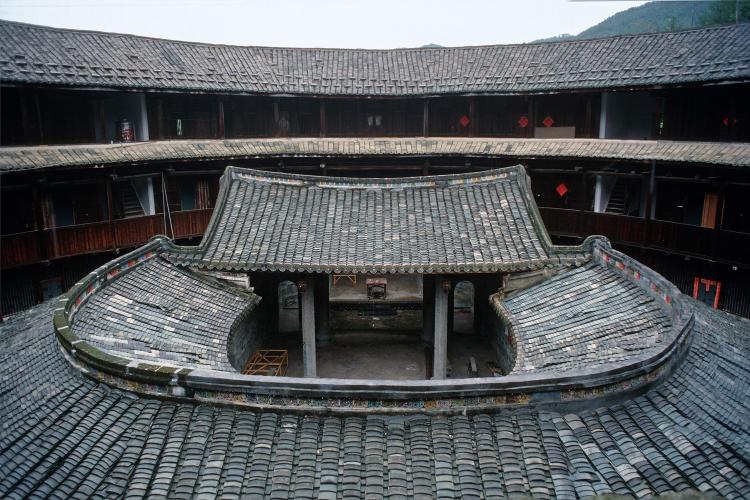
View of family temple. The central building was the ancestral hall used for family celebrations and other formal occasions.
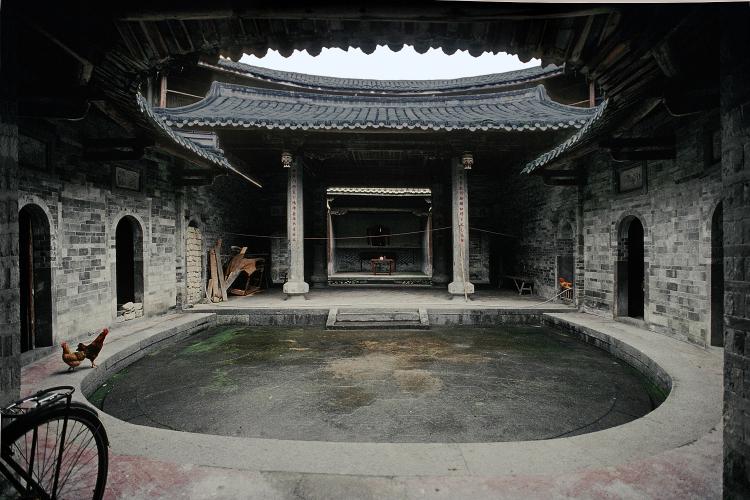
Interior view of family temple.
Research: Taishan Towers, Guangdong, China

These masonry towers stood five to seven stories high along the southern coast of Guangdong province.

The towers were built as protection against marauding bandits, wardlords, and pirates from South China Sea.
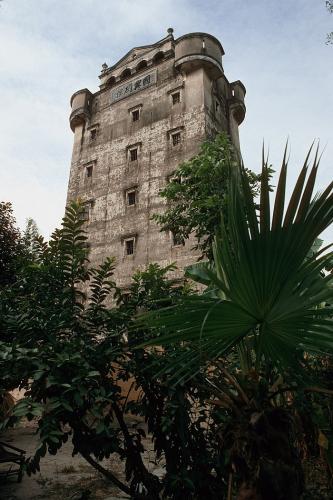
There are 4,000 towers in the Kaiping and Taishan area. Most were built between 1870 and 1930 by villagers to store their valuables during peacetime and used as refuges during raids.

View of tower exterior.

Villages communally owned the earlier towers, which were usually located near the entry to the village. Privately owned towers came later and were located among other houses.
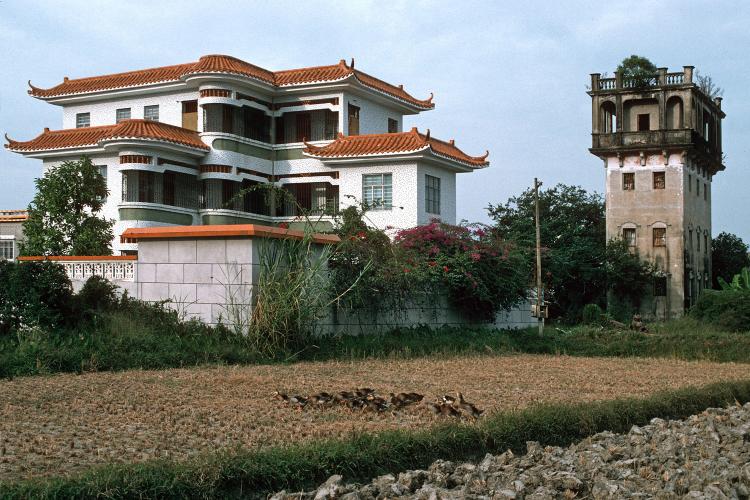
View of new and old towers. Chinese people living abroad financed towers to provide protection and garner local respect and prestige for their family members left in the village.
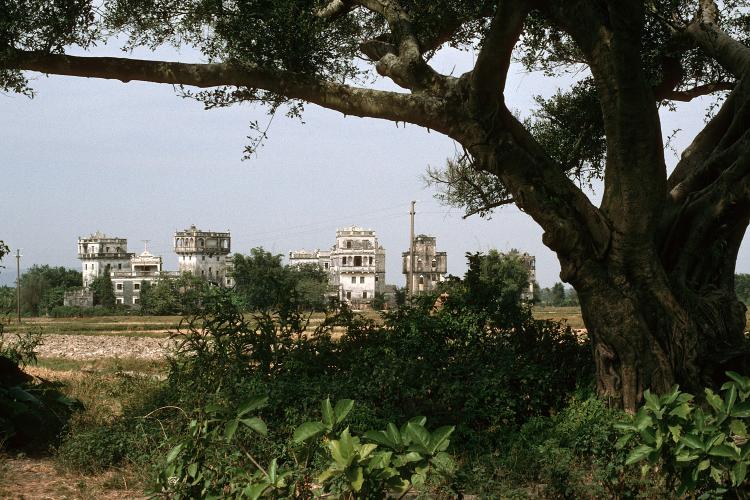
The location of the towers was to be cosmological to the larger landscape and in harmony with the village.
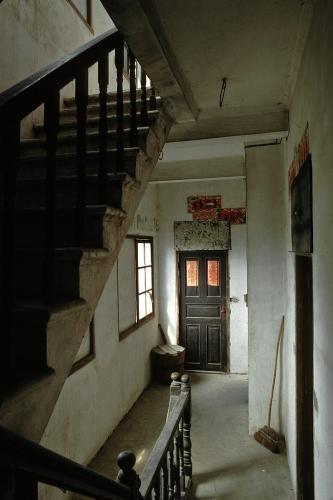
Interior tower stairway.
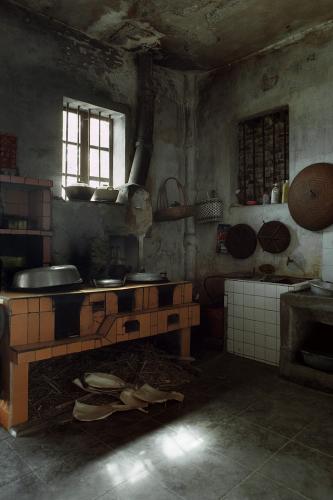
Tower kitchen.
Color: Lorem ipsum dolor sit amet, consectetur adipisicing elit. Distinctio, eveniet?
